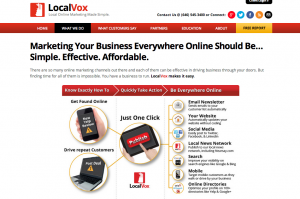 Although mobile still accounts for a small share of total online sales, a 2012 study by comScore revealed that four in every five American smartphone users turn to their mobile device before making a purchase.
Although mobile still accounts for a small share of total online sales, a 2012 study by comScore revealed that four in every five American smartphone users turn to their mobile device before making a purchase.

There is no doubt that mobile has become an integral part of our shopping process. Consumers research and compare prices, read peer reviews and search for the closest retailer on their phones. Today’s savvy shopper is always plugged in and expects your store at their fingertips.
Here's a look at some interesting stats on U.S. shopping behaviors between desktop and smartphone users:
- Smartphone shoppers are younger than their desktop counterparts. Of smartphone shoppers, 71 percent are under the age of 45 and account for nearly three in every four minutes spent on retail content via smartphones — this same age group accounts for 62 percent of the retail minutes spent on desktop computers.
- Smartphone users have a higher household income. Nearly one in every three have a household income of $100,000 or larger. This income segment drives a comparable 31 percent of minutes spent on retail sites and apps.Women shop more! This is no surprise, but females drive a higher percentage of time spent on retail sites, accounting for 53 percent of the retail minutes on desktop computers and 56 percent of the retail minutes spent on smartphones.
As mobile devices rapidly replace desktops as the primary means to access information and make purchases, here are four ways businesses can seamlessly transition from clicks to taps:
1. Implement Cross Device UX
This is a no-brainer, but you'll be surprised how some of the biggest brands deliver a poor mobile user-experience. In fact, 82 percent of business websites are actually not optimized for mobile phones! Some of them are even big corporate brands such as Apple. When viewed on a desktop, the website is clean and simple with user-friendly navigation, but accessing the same information on a smartphone (even on an iPhone) required a lot of pinching and zooming to read the tiny text.
Apple's website viewed on desktop vs. mobile.
It’s imperative that your site is optimized for mobile so your consumers have options. As a matter of fact, 67 percent start shopping on one device and continue on another and 81 percent of smartphone shopping is done spontaneously. A mobile-optimized site with responsive design trims down on unnecessary features, cuts content, uses vertical instead of horizontal navigation and enlarges interface elements.
2. Stay Brand Consistent
Making sure your website's brand is preserved between desktop and mobile versions is also very important. This can be achieved by ensuring your company's theme, logo, colors and look and feel are consistent. The mobile experience should be just as familiar as the desktop experience.
Audible does an excellent job at maintaining brand consistency across different devices. A customer who visits Audible on a mobile device feels like they are interacting with the same brand but with a simpler version. All their display banners are also recognizable and have cohesive messaging.
Brand consistency is maintained throughout Audible's display ads, app, mobile and desktop sites.
3. Understand Interactivity for Each Device
Because we interact differently on different devices, what works well on a desktop may be irrelevant on mobile. For example, we use keyboard shortcuts on a desktop, so we can be very precise and click on the exact button, but with mobile, typos are quite common. Eliminate long forms all together on mobile; use links with a hover-over effect and tap-to-call buttons. Scannable QR codes and geomarketing also work well to engage mobile buyers.
Keep in mind that the mobile experience is also very social compared to the desktop. Think of how many times you've been out with friends and looked up something together on someone’s phone, or you viewed something they shared on a social network. This smartphone user study says that 24 percent recommended a brand or product to others as a result of a smartphone search, so start creating goodwill with groups of "social shoppers".
4. Build An App
Consumers expect to reach you on the go, so give them options. Living Social and other daily deal sites have handy apps that are localized, tailored to users' interests and make purchasing an easy, quick tap away.
The smartphone and tablet are used by millions as more than a communications and productivity tool but as a shopping companion tool. Nine out of 10 smartphone searches result in actions that range from visiting a business to actually making a purchase. Understanding the dynamics between consumers and their mobile devices can help retailers create a more compelling and responsive mobile shopping experience — ultimately deepening relationships with existing customers as well as earning new business.











